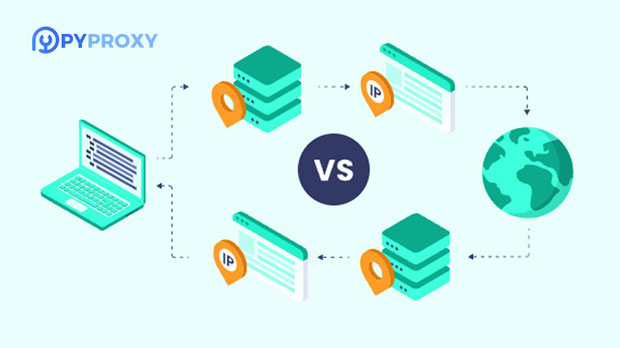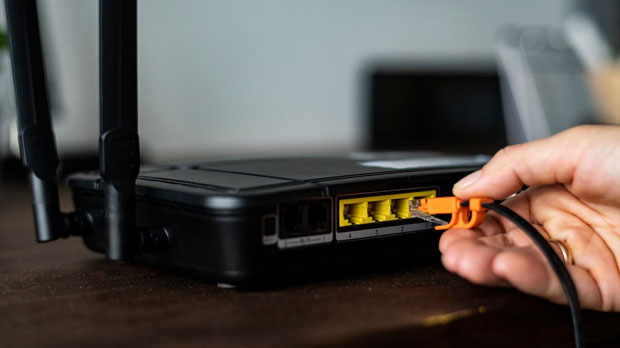When it comes to web scraping and data extraction, using a reliable proxy service can make all the difference in ensuring efficiency, privacy, and security. Two popular choices in the field of proxy services are Proxysite and PYPROXY. But which one is more suitable for web scraping and data extraction? This article will analyze the strengths and weaknesses of both services, providing a deep dive into their features and functionalities, to help you make an informed decision on which proxy service suits your scraping needs the most. Overview of Proxysite and PyProxyBefore diving into the specific use cases of Proxysite and PyProxy, it's important to understand what each service offers and how they differ from one another. Both of these services provide proxy solutions for browsing the web anonymously, but they are designed with different purposes and technical capabilities in mind.Proxysite is a widely used online proxy that allows users to browse websites without revealing their IP address. It is known for its simple user interface and ease of use, making it a popular choice for individuals who are looking to maintain privacy while surfing the web. However, when it comes to web scraping, Proxysite has some limitations in terms of performance and scalability.PyProxy, on the other hand, is a Python-based proxy service that offers more control and customization for users, especially those who are involved in more advanced web scraping projects. PyProxy is designed for developers who need to integrate proxy services into their scraping scripts. It offers more flexibility in terms of handling large-scale scraping tasks and bypassing complex anti-scraping mechanisms.Performance and ScalabilityOne of the most crucial factors to consider when choosing a proxy service for web scraping is performance. Proxysite is a straightforward and user-friendly proxy solution, but it may not be equipped to handle the demands of large-scale web scraping projects. It is suitable for light, one-off scraping tasks or occasional browsing but can quickly become slow or unreliable when scraping large amounts of data or attempting to extract information from websites with sophisticated anti-scraping systems.PyProxy, in contrast, is specifically designed for web scraping and offers far better scalability. It allows for greater control over proxy rotation, handling a higher volume of requests without compromising speed or efficiency. PyProxy integrates well with Python-based web scraping libraries such as BeautifulSoup and Scrapy, making it an excellent choice for developers who need to automate and scale their scraping operations.Customization and ControlCustomization and control are essential features when it comes to web scraping, as different websites may have varying levels of complexity and anti-scraping techniques in place. In this aspect, PyProxy stands out as the better option for more complex scraping tasks.Proxysite is a simple, out-of-the-box solution, which is perfect for users who are not concerned with advanced configurations or integrations. It is primarily a proxy gateway that allows users to access websites anonymously without the need for customization. While this is sufficient for simple scraping tasks, it lacks the flexibility required for large-scale, customized scraping operations.On the other hand, PyProxy provides users with much more control over their proxy settings, including rotating IP addresses and customizing the user agent. These features are important when scraping websites with advanced anti-scraping mechanisms, such as CAPTCHAs or IP blocking. PyProxy also supports integrating proxy networks, giving users the ability to switch between different proxy types, ensuring a smoother and more reliable scraping experience.Security and AnonymityWhen it comes to web scraping, maintaining security and anonymity is paramount. Both Proxysite and PyProxy offer some level of privacy protection, but they do so in different ways.Proxysite offers a relatively simple method of browsing the internet anonymously by masking your IP address. It provides basic protection for casual web scraping and browsing but may not be robust enough for users dealing with sensitive data or high-risk environments. Additionally, because Proxysite is a free service, there could be potential concerns regarding data privacy, as free proxy services may log user activity or serve ads.PyProxy, in comparison, offers a more secure and private experience, especially for developers. Since PyProxy is customizable, users can choose to use rotating IP addresses, secure proxy servers, and even proxy networks that prioritize privacy. This allows for a higher level of anonymity during scraping operations, reducing the risk of IP bans, geolocation tracking, and other security threats.Ease of UseFor users who are just starting with web scraping or those who don't require advanced features, ease of use can be a deciding factor in choosing a proxy service. In this category, Proxysite is the clear winner. Its simple interface and minimal setup requirements make it an ideal option for beginners. With Proxysite, all you need to do is visit the website, enter the URL you wish to access, and start browsing anonymously. This simplicity makes it very accessible for non-technical users who only need to scrape a few websites.PyProxy, while offering more control and flexibility, requires a higher level of technical knowledge. Since it is Python-based, users need to be familiar with coding and web scraping libraries in order to fully take advantage of its capabilities. For developers who are comfortable with Python, this is an advantage, but for those who are not, the learning curve may be steep.Cost-EffectivenessCost is another significant factor when selecting a proxy service for web scraping. Proxysite is free to use, making it an attractive option for users who need a simple and cost-effective solution for browsing or light web scraping. However, while Proxysite is free, its performance and scalability limitations may hinder large-scale scraping projects, forcing users to look for premium services eventually.PyProxy, on the other hand, offers more features, better performance, and customization options, but it may come at a higher cost. Since it is typically used by developers or businesses that require high performance and privacy, PyProxy’s pricing is often based on usage volume or subscription plans. While it may seem expensive for individual users or small-scale projects, the investment may pay off for those who need reliable and secure proxy services for large-scale web scraping.Conclusion: Which is Better for Web Scraping and Data Extraction?Both Proxysite and PyProxy have their strengths and weaknesses, and the right choice for you depends on the scale, complexity, and technical requirements of your web scraping project. For users who need a simple, easy-to-use, and free solution for basic web scraping tasks, Proxysite is a great option. It is ideal for small-scale projects or for those who do not require advanced features.On the other hand, PyProxy is the better choice for developers and businesses that need more control, security, and scalability for large-scale or complex scraping operations. With its advanced features like proxy rotation, customizable settings, and better privacy protection, PyProxy is more suitable for users who are serious about web scraping and data extraction.Ultimately, the decision between Proxysite and PyProxy will depend on your specific needs, technical expertise, and budget.
Mar 31, 2025
![arrow]()



























































